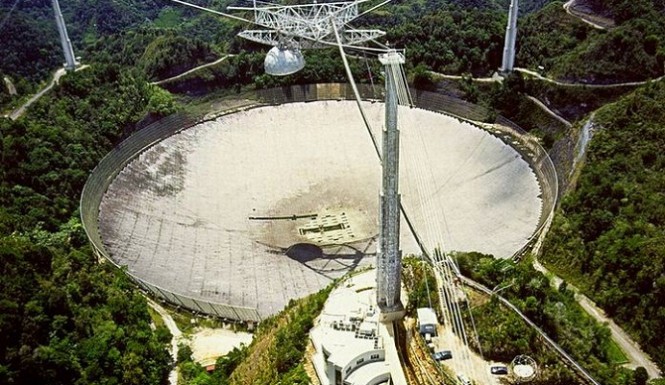World’s largest Radio Telescope will be ready in China by 2016
China has announced that it is building the world’s largest telescope with a dish that equals the size of 30 football pitches. Technicians have now started the process of attaching 4,450 triangular-shaped panels for the telescope’s reflector.
The place was ideal for locating the telescope because there are no cities within a 5 km radius ensuring radio silence that is necessary for the working of the radio telescope.
Makers of the telescope claim that FAST will be the world’s largest single-aperture telescope, and will overtake the Arecibo Observatory in the US territory of Puerto Rico, which is 305 meters (1000 feet) in diameter.
Xinhua reports that China’s National Astronomical Observatories FAST project chief scientist, Nan Rendong, explained that the advantage of having a bigger dish is that it is able to scan deep space and detect weaker and more distant signals better than smaller ones.
Caihong also explained that the region has a Karst topography, consisting of porous rock, underground caves, and crevasses that provide effective drainage needed to protect the reflector. There will be maintenance passages under it.
The dish can shift to receive radio from different angles, said Zheng Yuanpeng, chief engineer of the telescope’s panel project.
The panels of the telescope are so designed that their positions can be altered through connected wires and parallel robots. FAST engineers have ensured that the panel’s position can be adjusted with the accuracy of 1 mm. An observation platform is being constructed on top of a hill to allow visitors to view the dish.
As for the Chinese scientists, this is a huge step forward in their attempt to observe outer space, search for extra-terrestrial life and explore the origins of universe, given the fact that for years they have worked on “second-hand” information collected by other countries and failed to achieve a major breakthrough. Wu Xiangping, director-general of the Chinese Astronomical said. The construction of the telescope began in 2011 and is set to complete by the end of 2016.








